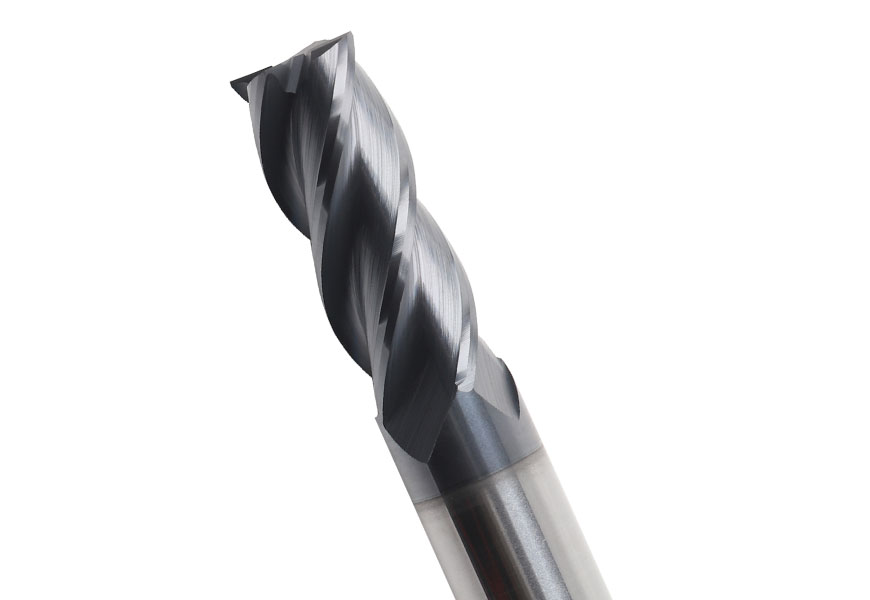
The helix angle of a carbide end mill refers to the angle formed between the leading edge of the flute and a line parallel to the tool's axis. The helix angle plays a crucial role in the performance of the end mill, and its selection depends on various factors related to the specific machining application. Here's how the helix angle influences the performance of a carbide end mill:
Chip Evacuation:
A higher helix angle generally results in a more aggressive cutting action, aiding in efficient chip evacuation from the cutting zone. Increased chip evacuation is particularly beneficial in deep or heavy cutting operations, reducing the risk of chip recutting and improving overall machining efficiency.
Stability and Rigidity:
Lower helix angles provide increased tool rigidity and stability during machining.
Higher helix angles can reduce the contact area between the cutting edges and the workpiece, which may be advantageous for softer materials or when minimizing cutting forces is crucial.
Surface Finish:
The helix angle influences the interaction between the cutting edges and the workpiece, affecting the surface finish of the machined part. Lower helix angles may be preferred for achieving smoother surface finishes, especially in finishing operations.
Material Compatibility:
The choice of helix angle depends on the type of material being machined. For softer materials, a lower helix angle may be suitable to ensure stability, while higher helix angles may be preferred for harder materials to enhance chip evacuation.
Tool Life:
The helix angle can influence the tool life of the carbide end mill. Lower helix angles can contribute to longer tool life due to increased tool rigidity, while higher helix angles may be preferred for optimizing material removal rates.
The helix angle is a critical parameter in the performance of carbide end mills, influencing chip evacuation, tool stability, surface finish, and material removal rates. The optimal helix angle is determined by a combination of factors, including the material being machined, the specific machining operation, and the desired balance between cutting aggressiveness and tool stability.
Related search keywords:
carbide end mills, carbide end mills for aluminum, carbide end mills roughing, carbide ball end mills, carbide ball nose end mills, solid carbide end mills, end mills for cutting carbide, 5 flute carbide end mills, 2 flute carbide end mills, carbide tools end mills
